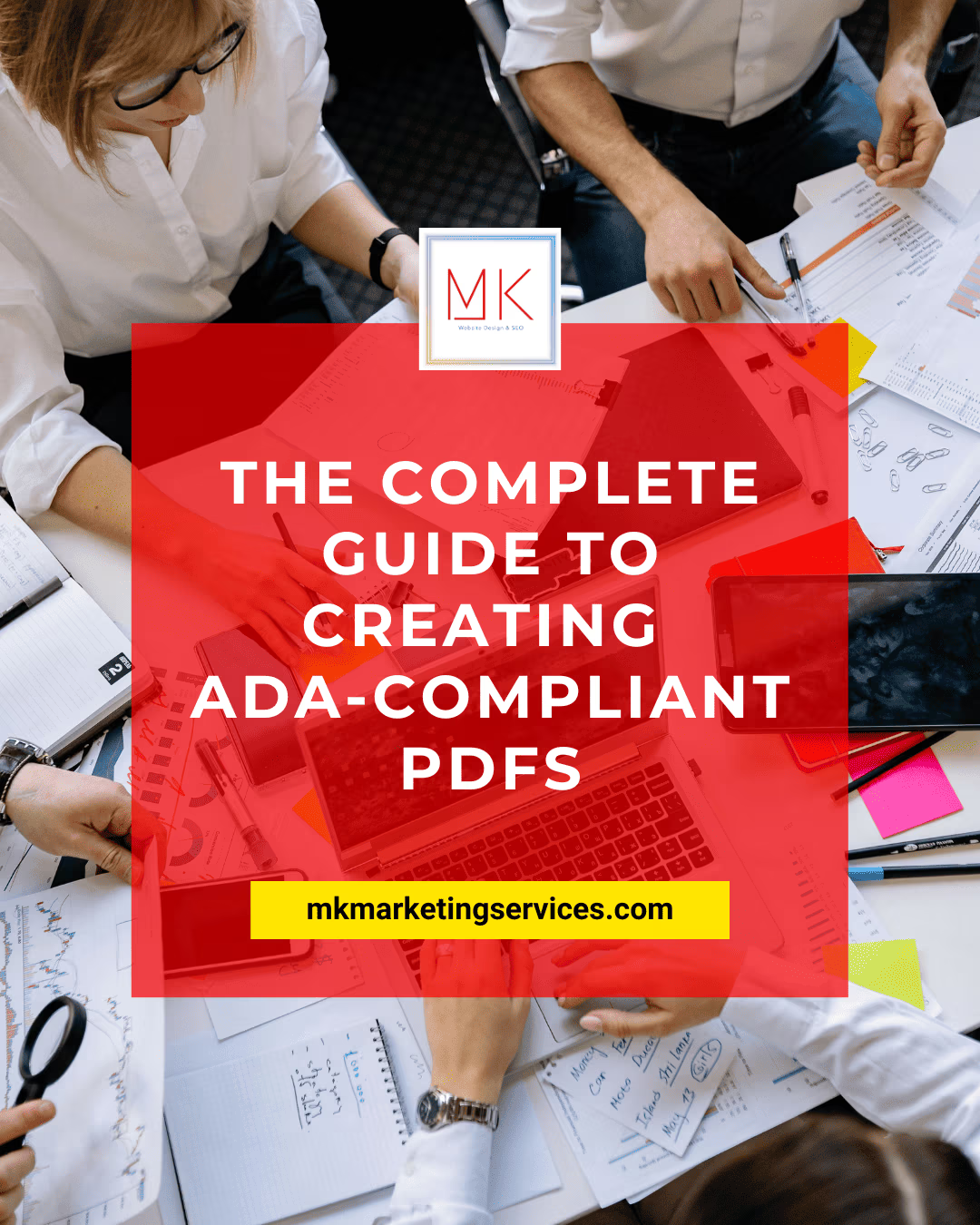In 2021, 90% of the files Google found online were PDFs.
Offering users a secure, versatile, and easy means of online document distribution, PDFs’ continued popularity should come as no surprise. However, in their basic form, PDFs are virtually inaccessible to a significant section of the population:
The disability community.
People with vision impairments, hearing loss, or other disabilities often rely on assistive technology to access digital content. And, for the most part, PDFs are not set up to allow for this.
Luckily, there are steps you can take to address and remediate accessibility issues existing within your PDF files to ensure that people with disabilities can access them. These steps can, and should, be pursued by all organizations, regardless of size and industry. However, certain businesses are mandated by law to present accessible PDFs on their websites, under the Americans with Disabilities Act (ADA).
In this blog, we’ll explore the importance of creating ADA-compliant PDFs. We’ll highlight the most common errors you should avoid when creating an accessible PDF, showcase how you can remediate an existing PDF to make it ADA-compliant, and list the most prominent tools for creating accessible PDFs.
ADA compliance and PDFs: an overview
The Americans with Disabilities Act (ADA) is a civil rights law that prohibits discrimination against people with disabilities in public spaces. ADA Title III applies to businesses categorized as “public accommodations” like schools, transportation, retail stores, hospitals, and restaurants, to name a few.
In 2018, the Department of Justice (DOJ) made it clear that websites are also “public accommodations” under the ADA. This means that websites must be accessible to people who have vision, auditory, or other disabilities that inhibit their ability to navigate online domains.
It’s important to note that U.S. courts apply the ADA to other areas of businesses’ online domains, not just their websites. This includes, but isn’t limited to, emails, videos, and online documents like PDFs.
WCAG and PDFs
To create or remediate existing PDFs to comply with the ADA, businesses should draw upon web accessibility standards. The latter includes instructions that apply to online documents, as well as general website elements.
The most prominent web accessibility standards, and those that U.S. courts have frequently referenced, are the Web Content Accessibility Guidelines (WCAG). Created by the World Wide Web Consortium (W3C), WCAG has a deciding impact on global web accessibility policy.
Another prominent accessibility standard for PDFs is PDF/UA (Universal Accessibility). An international standard (ISO 14289), PDF/UA includes many of the instructions appearing in WCAG.
Remediating your PDF so that it meets PDF/UA is a great step toward ensuring people with disabilities can properly-access it. However, in this blog, we will focus on ways in which your PDF can conform to WCAG.
There are a number of versions of WCAG that PDFs and other web-based content can conform to.
U.S. courts have generally referred to WCAG 2.0 Level AA (i.e., an earlier iteration of these guidelines) as the required conformance level in web accessibility lawsuits. Today, however, conforming to WCAG 2.1 (i.e., the most up-to-date version of these guidelines) at Level AA will likely see you avoiding any ADA website compliance lawsuits.
Both WCAG iterations apply to PDF accessibility.

Creating ADA-compliant PDFs is simply the right thing to do. Everyone deserves equal access to information, and creating accessible PDFs ensures people with disabilities can access the same content as everyone else.
Additionally, ADA-compliant PDFs can prove instrumental in generating positive business results. In the United States alone, 61 million people live with disabilities. By providing accessible content, you’re tapping into this sizable market.
Finally, ensuring your PDFs are accessible is critical from a legal perspective, as well.
The ADA applies to businesses’ online domains, including PDF documents, and, under the law, they must be made accessible to people with disabilities. Presenting inaccessible PDFs is discriminatory against the disability community, and businesses that do so can face significant legal recourse, such as receiving ADA compliance demand letters and potentially facing ADA compliance lawsuits.
Section 508 and PDF accessibility
Section 508 of the Rehabilitation Act requires government agencies, organizations that receive federal funding, and service providers to such organizations to make their information and communication technology (ICT) accessible to the disability community. PDFs, along with other online documents, must be made accessible to people with disabilities under Section 508.













